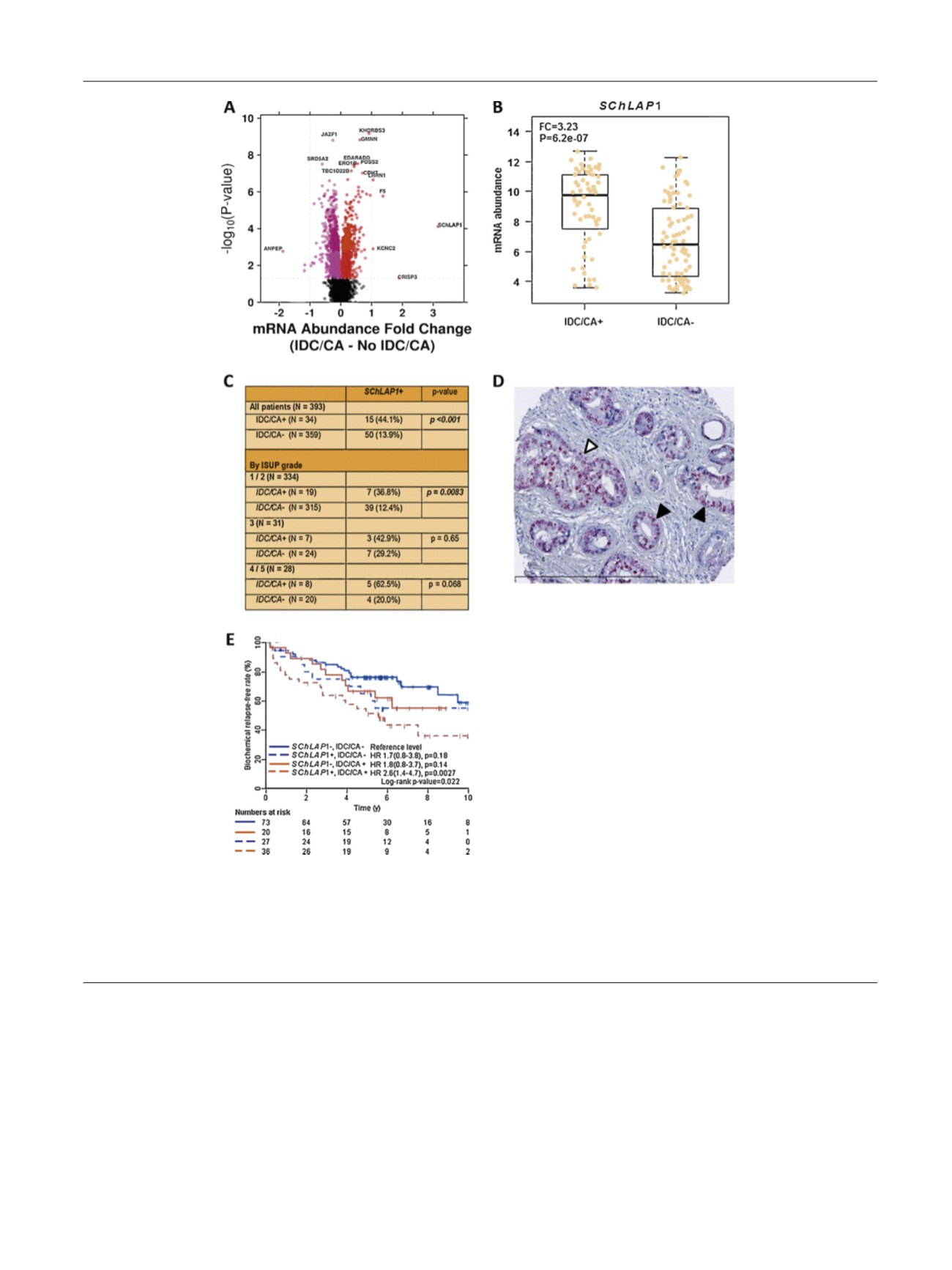

given the storm of aggressive changes within the prostate
gland
( Fig. 4 ). Importantly, we show that the presence of
nimbosus
is associated with aggression to otherwise
morphologically indolent prostate tumors.
Examples of field-wide changes in prostate cancer
include hypoxia within the microenvironment
[26], epithe-
lial-to-mesenchymal transition
[27], and even differential
androgen signaling
[28,29]. Here, we showed that a diffuse
expression of
SChLAP1
was observed in situ in both
intratumoral glandular and variant (IDC/CA) components,
which further supports a common clonal ancestor to both
histopathologies. However, it remains speculative if the co-
occurrence of
SChLAP1
dysregulation and genomic insta-
bility represents early field-wide molecular aberrations
responsible for driving the development of clonal prome-
tastatic IDC/CA and glandular adenocarcinoma. The con-
cept of field cancerization leading to prostate
tumorigenesis is further backed by observation of high
levels of mutations in the adjacent normal prostate
epithelium, suggesting for ongoing mutational processes
[(Fig._3)TD$FIG]
Fig. 3 –
SChLAP1
is highly expressed in prostate cancers harboring intraductal carcinoma (IDC) and cribriform architecture (CA). (A) Volcano plot of
mRNA abundance of 156 tumors (Canadian cohort) showing differential gene expression between IDC/CA+ and IDC/CA– prostate cancers. (B) Box and
whisker (first/third quartiles
W
IQR) plot comparison of
SChLAP1
mRNA abundance between the two groups. (C) Independent validation of
SChLAP1
association with IDC/CA, using RNA-ISH (
I
5 signals cutoff) on tissue microarray (EMC cohort). (D) Diffuse
SChLAP1
RNA-ISH signals in CA subpathology
(open arrow) and adjacent invasive adenocarcinoma (closed arrows) support a field defect. (E) Biochemical relapse-free rate of Canadian cohort
stratified by combinatorial IDC/CA and
SChLAP1
(upper tertile cutoff), showing worst outcome in
SChLAP1+
, IDC/CA+ subgroup. EMC = Erasmus Medical
Center; FC = fold change; FDR = false discovery rate; IQR = interquartile range; RNA-ISH = RNA in situ hybridization.
E U R O P E A N U R O L O G Y 7 2 ( 2 0 1 7 ) 6 6 5 – 6 7 4
671
















